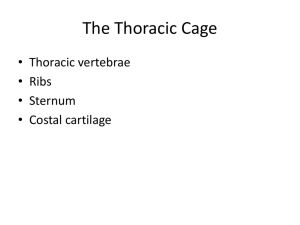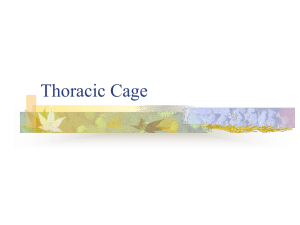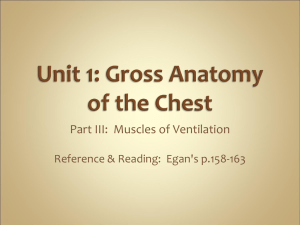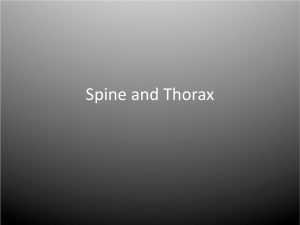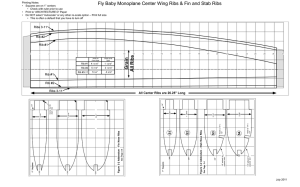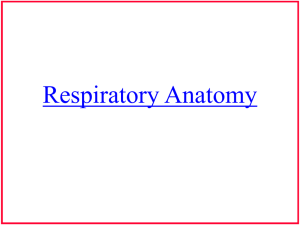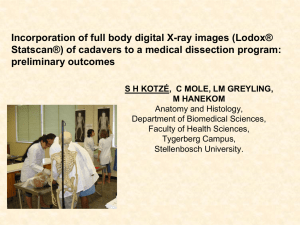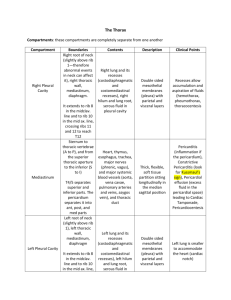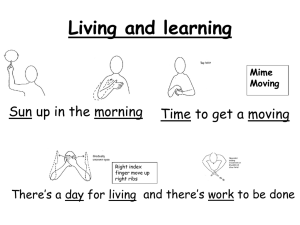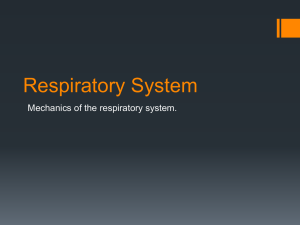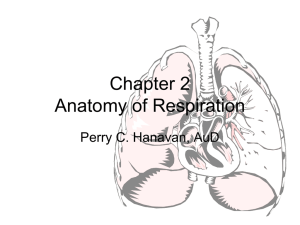Unit IV – The Thoracic Cage/ Respiration & Breathing
advertisement
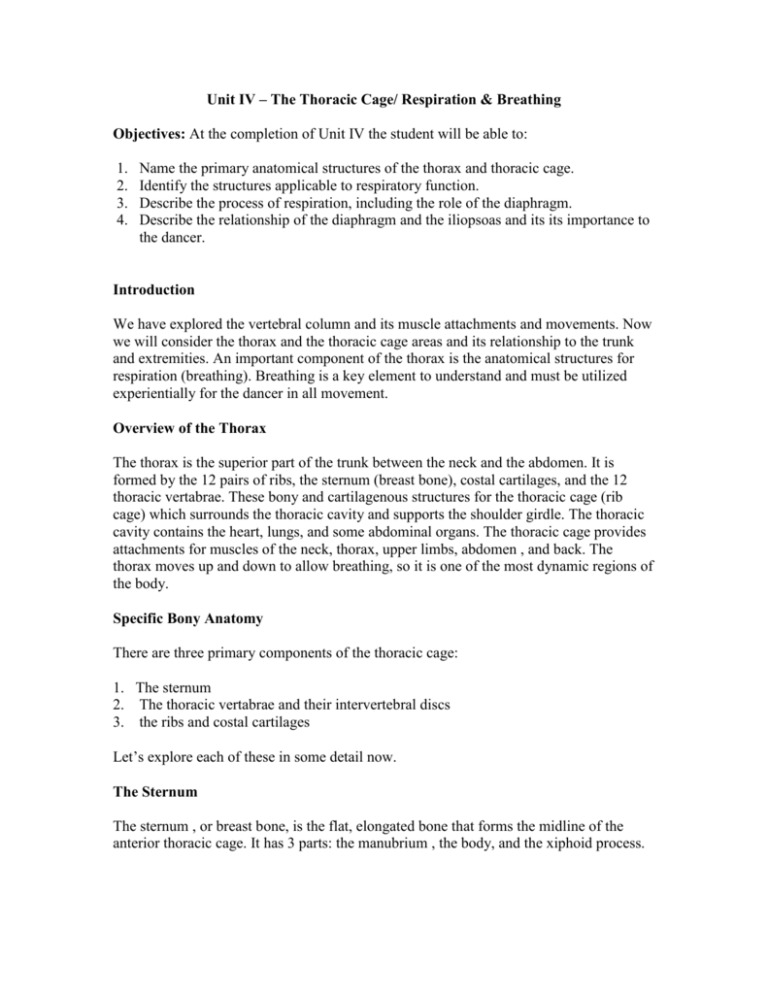
Unit IV – The Thoracic Cage/ Respiration & Breathing Objectives: At the completion of Unit IV the student will be able to: 1. 2. 3. 4. Name the primary anatomical structures of the thorax and thoracic cage. Identify the structures applicable to respiratory function. Describe the process of respiration, including the role of the diaphragm. Describe the relationship of the diaphragm and the iliopsoas and its its importance to the dancer. Introduction We have explored the vertebral column and its muscle attachments and movements. Now we will consider the thorax and the thoracic cage areas and its relationship to the trunk and extremities. An important component of the thorax is the anatomical structures for respiration (breathing). Breathing is a key element to understand and must be utilized experientially for the dancer in all movement. Overview of the Thorax The thorax is the superior part of the trunk between the neck and the abdomen. It is formed by the 12 pairs of ribs, the sternum (breast bone), costal cartilages, and the 12 thoracic vertabrae. These bony and cartilagenous structures for the thoracic cage (rib cage) which surrounds the thoracic cavity and supports the shoulder girdle. The thoracic cavity contains the heart, lungs, and some abdominal organs. The thoracic cage provides attachments for muscles of the neck, thorax, upper limbs, abdomen , and back. The thorax moves up and down to allow breathing, so it is one of the most dynamic regions of the body. Specific Bony Anatomy There are three primary components of the thoracic cage: 1. The sternum 2. The thoracic vertabrae and their intervertebral discs 3. the ribs and costal cartilages Let’s explore each of these in some detail now. The Sternum The sternum , or breast bone, is the flat, elongated bone that forms the midline of the anterior thoracic cage. It has 3 parts: the manubrium , the body, and the xiphoid process. The Manubrium – is like the handle of the sword with the body of the sternum its blade. It is the superior most component of the sternum and has several important indentations. Indentations – Jugular notch – the most superior aspect of the manubrium that you can feel at the base of your throat Clavicular notches – these are the left and right notches that articulate with the sternal end of the clavical (collar bone). These two bones form an articulation called the sternoclavicular joint. There is a right and a left sternoclavicular joint. Costal notches – these are small notches at the lower end of the manubrium that are attachments for the first ribs on the right and on the left. The Body - This is the longer, narrower portion of the sternum that extends down the front of the chest wall. The body is sometimes called the breast bone and is the hard structure you can fell in the middle of your chest. It houses the costal notches for articulations with ribs 2-7. The Xiphoid Process – This is the inferior most component of the sternum. It is a small cartilagenous structure that varies in shape from pointed to blunt. It ossifies by age 40. The Thoracic Vertabrae The 12 thoracic vertabrae have the same bony components as the lumbar vertabrae discussed in Unit III. They also have several additional special features: 1. Costal facets (flat spots for attachments) on the body of the vertabrae for articulation with the ribs 2. Costal facets on the transverse processes for articulation with the tubercles of the ribs 3. Long spinouse processes The attachment location of the rib to the vertabrae is called the costovertebral articulation. This articulation is made up of the head of one rib and the costal facets on the vertabrae of that rib and the vertabrae above. For example: thoracic rib #7 articulates with the costal facets of the lower part of the vertabrae T6 and the upper part of the vertabrae of T7. The costotransverse joint articulation is the attachment of the the rib (example – T7 rib) with the facet on the transverse process of vertabrae T7. **This articulation structure will be important when we explore the movement of the ribs in the next section of this unit. The Ribs The ribs are elongated, flattened, and twisted bones. They are very light weight and resilient. There are 3 types of ribs: 1. True Ribs – ribs 1-7 ; these are attached directly to the sternum through their own costal cartilages. 2. False Ribs – ribs 8-10; their costal cartilages are joined to the rib just above them so their attachment to the sternum is indirect 3. Floating Ribs – ribs 11-12; these ribs attach to vertabrae, but not to the sternum so they float on one end Structure of Typical Rib – Ribs 3-10 A typical rib is twisted along its axis and has a sharp bend in the shaft called the costal angle. There are two main parts to the typical rib: Posterior portion – This portion of the rib has a head and 2 facets for articulation with the bodies of the thoracic vertabrae. The neck of the rib is located just behind these facets and is a constricted section of the bone. The tubercle is a bony prominence for articulation with the transverse process of the thoracic vertabrae and for attachment of ligagments. The Body – This is the long, curved shaft of the bone; its anterior end attaches to the costal cartilage that then attaches to the sternum. Structure of Atypical Ribs – Ribs 1-2, and 11-12 Several ribs have a slightly different structure than the typical ribs, due to their location in the thoracic cage. Ribs 1 and 2 are shorter, flatter, and tilted more forward than the others. Many important nerve trunks and blood vesselts pass across rib 1 on the way to the arm. Ribs 11 and 12 are short, floating ribs that do not attach anteriorly to the sternum, so they have no neck or tubercles. Respiration – Rib Movement and Thoracic Cage Function for Breathing
